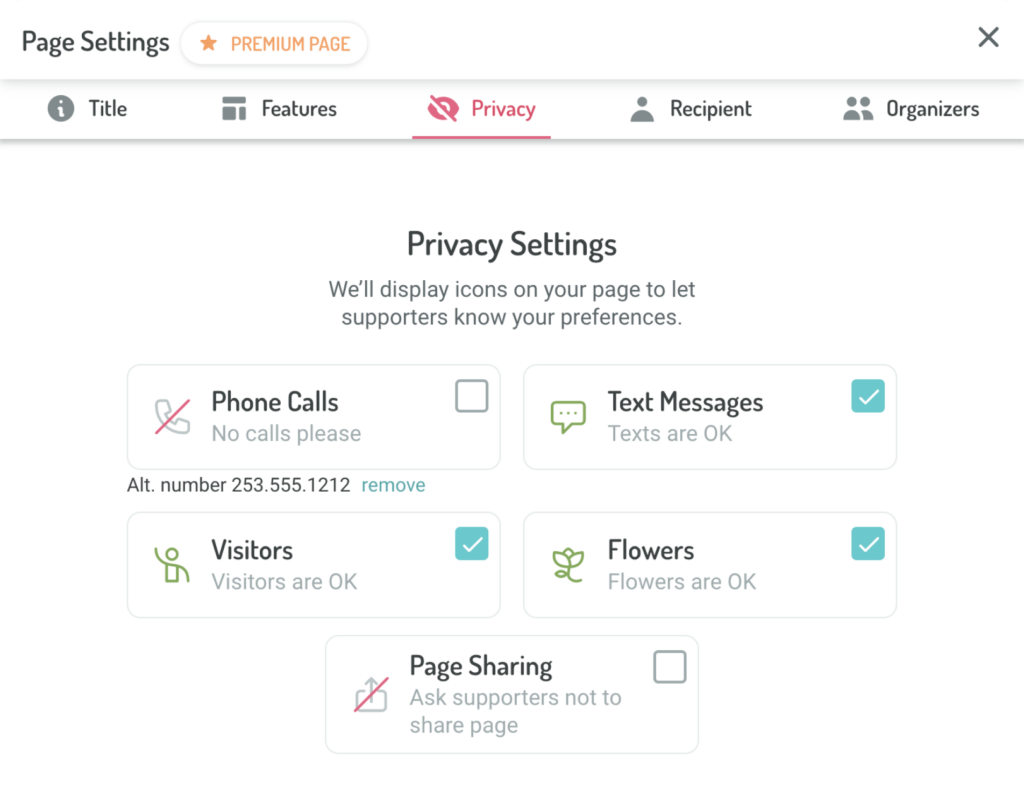Award-winning memoir writer and teacher, Kerry Cohen, describes the struggle to feed her neuroatypical son, Ezra. The below introduction, written by Kerry, is from a short piece but represents a call from the collective bottom of the hearts of the parents of all neuroatypical children.
I see too many articles in the news, or too many comments on television, or too many ads about the epidemic of autism, and I remember that we still don’t think of autistic children/people as meaningful in the world as other children. Not just autistic kids, of course – all people with disabilities. … Anyway, I just want to take this moment to remind the world: Ezra is as human and whole and real and loved and useful as anyone else. Of course he is. How enraging that I even have to say it. I feel awful when people say to me: you’re so courageous. You’re so amazing to parent Ezra. No, I’m not. I’m just a mom. I’m just a normal parent. I love Ezra with the same fierce animal love you love your children. There is nothing courageous about that. There is nothing brave about being a mom to a human baby.
//
Sustenance
My six-year-old son eats mud. He eats sand, clay, and paper. I have seen him put dead, muddy leaves in his mouth, place bubbles from the bath on his tongue. He has chewed on twigs and rubber bones meant for dogs, ripped Nerf balls into various pieces of foam with his teeth. He regularly tries to sneak Play-Doh, a secret treat, before we say, “Out of your mouth, Ezra,” as he knows we will. Once I saw him bend down and press the tip of his tongue into the fresh spring dirt. I have pulled pebbles, marbles, string, rubber bands, tissue wads, and packing peanuts from his mouth, terrified he would choke.
When Ezra was nine months old, I fed him mashed bananas, peaches, apples, pears, and rice cereal. He never ate carrots or peas, although I tried. At age one, he picked up Cheerios with his tiny chubby fingers and pressed them into his mouth. I would find them in his diapers and tucked into his socks. I nursed him from his first days until he was two-and-a-half years old. He never drank from a bottle, would only drink from me, his small body tucked up against mine.
And then, he stopped eating. To be accurate, he would only eat two things: Smart Puffs and Earth’s Best Organic Cinnamon Cookies. He drank milk, but only out of a particular type of sippy cup. For a brief time, he ate pizza and bananas, but he eventually dropped these too. For the first few years of his life, his father and I ate our dinner together at the table, and, in those first few years, we made him sit with us too. We did so because it seemed like the right thing to do. It was part of our plans for a life with a child. We’d have meals around a table. We’d talk about our days. Eating would have clear rules attached to it. You eat this, but not that. You sit here when you eat it, and then you put your dish in the sink. We did this at first, but eventually we let him have his Smart Puffs where he wanted because he got so frustrated sitting there that he wouldn’t even eat his Smart Puffs, and the bottom line was that we wanted him to eat. Anywhere. So we handed the bag to him in the car, let him leave cheese puff dust on the floor where he sat with the bag and flipped through a book. And eventually, Ezra’s dad and I stopped sitting at the table too. We ate separate dinners, at separate times, one of us in front of the TV, one of us at the table with a magazine.
At first, you see, I didn’t feel frightened. I believed we would find whatever answer we needed in order to get Ezra eating again. I assumed that there would be some technique, some lever I could pull. I assumed, as his mother, I would be able to feed him. Because that’s what mothers do.
Ezra has pica, which is a childhood disorder characterized by compulsive and persistent cravings for nonfood items, such as mud, paper, and dirt. The word “pica” comes from the Latin word for magpie, a bird known for its indiscriminate appetite. Twenty-five to 30 percent of children have pica, and it is most common among those with developmental disabilities like autism, which Ezra has. Ezra expresses his autism in two primary ways: he struggles with language, especially conversation, and he doesn’t eat.
There are all sorts of theories as to why children might crave things that are not food. One is that the craving grows from nutritional deficiency. Another is that it comes as a distorted response to neglect or abuse. When the child has autism, though, there is no obvious reason for the behavior. It is a neurological hiccup, a disturbance in the brain’s reward circuitry. Our drive to eat is generated through the hypothalamus, which contains the pituitary gland and is located in the middle of the base of the brain. But if there is confusion among the neural pathways, or damage near the lateral hypothalamus, the organism will experience aversion to sources of sustenance.
All these words are so inadequate. Sometimes words seem utterly foreign to me, as I imagine they do for Ezra. These terms and concepts – pica, hypothalamus, autism – don’t explain to me why my child won’t engage in this basic survival instinct of eating food. They don’t get at the way it feels to find him in the backyard, as I often do, a ring of brown around his mouth from eating mud, don’t get at how it feels when I yell, “Ezra, no! Stop! What’s wrong with you?” he laughs, or ignores me, or says angrily, “Achoo!” They can’t get at the grief and frustration I feel when he says this outrageously irrelevant non-word. Can’t get at the pain I feel when I offer him food I know he would like if he would just allow it into his body. Can’t get at the wild, violent temptation I have had to smash the food into his mouth, force it down his esophagus, to just eat food, for God’s sake. But he won’t.
I know Ezra as intimately as a person can know another physical organism without dissecting his insides, without actually going into his brain, moving around the folds, messing with the electricity there. I know the shape and size of the little mole near his bellybutton. I know the freckle on his temple, the colorless mole on his shoulder, the little line between his nostrils that reminds me each time I notice it that he was built inside my body — two halves that merged into one. I fed him through the complicated workings of my organs and veins, and then, when he arrived, through the milk ducts in my breasts. We stared at one another as he suckled, connected, an ancient tether between us. I know he has a slight extra bone jutting out near his big toe. I have used a plastic spoon to handle his feces, preparing a sample for testing. I’ve cleaned up his vomit, washed his soft skin with my hands. I know his scent: sweet, almost spicy, like clove. I have kissed almost every spot on his small body, held the animal weight of it since he was only the beginning of something solid and real in my body.
I know all these things, and yet I couldn’t have known this world we’d wind up in, this world where I have a son who eats leaves and there’s nothing I can do to change it. Not that I haven’t tried. Since Ezra stopped nursing I’ve offered him macaroni and cheese, plain noodles, cereal, cream of wheat with milk, chocolate milk, goldfish crackers, animal crackers, pizza, carrots, apples, bananas, string beans, candy, peanut butter, juice. No thank, he says each time, pushing my hand away, turning his head. People have asked, “Have you tried French fries?” “Have you tried smoothies?” No, I want to say. No, but thank God you came along and suggested the one thing in the world I haven’t tried to feed him, and the one thing he will miraculously eat. But I don’t say this because they’re just trying to help. They’re not trying to make me feel worse than I already do.
At a play date, a friend once said to me, “I couldn’t stand it if my kid didn’t eat.” She wasn’t trying to make me feel worse either.
I have received suggestions from strangers and family members and friends. Take away the Smart Puffs and cookies and milk. Give him broccoli and steak. Eventually he’ll have to eat it. He won’t starve himself, they say, as though he is not a person who eats sand and muddy leaves.
My friends who are mothers concern themselves with which yogurt has the least sugar, which fruits are local and organic, which bread has the most whole grain. They discuss how to get flax seed into their kids’ diets, and how to hide vegetables in sauce. They, too, aren’t trying to make me feel like a failure, like I’ll never be able to do the thing all mothers are entitled and programmed to do: to simply feed my child, to get to choose what he eats, to have that kind of control.
A pediatrician once frowned and said, “Who let him have Smart Puffs in the first place?” She was trying to make me feel bad, which also happens.
For a long time I held on to fantasies. I imagined him at the lunch table with the other little boys. He ate everything – great platters of vegetables and fruit. He ate rice and tofu and sauteed spinach. Fantasies, though, are dangerous. They kept me from the task at hand, which was to get my child to eat. And, anyway, now sometimes I fantasize that this will just come to its end, which would mean Ezra would get a feeding tube, a surgical procedure, and finally, finally, he would get the nutrition he needs. Other mothers don’t wish for such things, do they? I have no idea what other mothers wish for. I can’t imagine anymore what it would be like to be those other mothers. I gave up that fantasy as well.
Ezra has been to three occupational therapists. They all told me his aversion to eating food was sensory in origin. One had him jump into a ball pit again and again. Another instructed me to have him kiss the food he doesn’t want to eat and drop it in an “all done bowl.” The last one handed me a printout that described the forty-eight steps toward eating. I read each one: Being in the room with aversive food. Standing near aversive food. Smelling aversive food. Allowing aversive food on plate. She explained that eating is the only human behavior, other than sex, that uses all the sensory processes in the body. She described the movement of food into the body, the sensual, tricky manner in which it gets smelled, tasted, chewed, and swallowed. She told me we needed to stimulate his mouth, expose him to tastes, and that eventually we would get him to eat. I believed her entirely.
I sat on a rocking chair in her sensory gym and watched as she pushed him on a square, wooden swing that hung from the ceiling by a carabiner. He laughed, said, “Again! Again!” But to get another push he had to accept the vibrating tools in the shapes of elephant heads and mice – strange, almost sexual devices, you had to admit – inside his mouth. He had to let her massage and squeeze his lips and jaw. Within a month, using this swing technique, she got him to tolerate licking an artificially flavored lollipop. We congratulated one another and him. I called other people, excited. But nine months later, my enthusiasm waned. He tolerated more and more artificially flavored lollipops. Still, he wasn’t eating.
I took him to a behavioral therapist. She told me his aversion was not sensory, but part of the rigidity of autism. I believed this. Yes! This made sense! She had him lick pieces of banana in five-minute segments. “No thank,” he said, but eventually he touched his tongue to the banana because he knew if he did so he would be released from having to do so for another five minutes.
I put him on liquid Paxil, the SSRI that also acts as an anxiolytic — mixed into his milk, of course, along with powdered multi-vitamins and probiotics and liquid zinc and colostrums for increased immunity — believing in the same desperate way I have believed all the promises we’ve received about his feeding therapies that it might switch something in his brain to make him eat food. It hasn’t.
One therapist suggested we not give him milk until after he has eaten, even though his milk is where I put his supplements. Even though his milk is the vehicle by which I can give him some semblance of nutrition, the one nutritious thing I can feed him. Most therapists have suggested we sit him down for three meals. They suggest we serve him his meals on a plate, with the unwanted food next to the ones he will eat. They use this word “meal” with sincerity.
I can go to doctors and therapists and nutritionists. I can tell these stories a hundred times. I can feel angry, sad, as though everything is unfair. But beneath all of this is the simple, uncomplicated truth: Ezra has been here for five years and he has never eaten a vegetable. He has never eaten meat or a brownie or had a bite of birthday cake. And, I am helpless. Completely, utterly helpless. There was not a thing I could have done to prepare myself for such a truth.
His teacher recently began messing with his three foods. They mix the cookies with milk to make a cereal he eats with a spoon. They crunch up his cheese puffs and have him eat that with a fork. Yesterday, they snuck a cooked egg yolk in with the mashed up cheese puffs and he ate the whole thing, unknowingly. This means that yesterday he got non-milk animal protein for the first time in his life. I immediately started imagining a life with my son where we’d eat square meals, where he ate egg yolk today and broccoli next and artichokes in a year.
In the car, driving home, I said, “Ezra, you ate egg today! You didn’t even know, but you ate egg!”
“No thank,” he said, without missing a beat.
This essay originally appeared in Literary Mama. It is used here with the permission of the author.



 Their newest arrival,
Their newest arrival, 